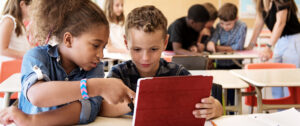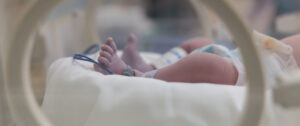As an ASHA member, you support individuals with cognitive-communication disorders (CCDs) across the lifespan. The latest Special Issue from the American Journal of Speech-Language Pathology (AJSLP) provides timely resources dedicated to helping you navigate this critical but under-addressed population.
CCDs typically develop after acquired brain injury—including traumatic brain injury and right hemisphere disorder. People with CCDs may face difficulties with language, organization, attention, problem-solving, and executive function. People of all ages are at risk of cognitive communication disorders, with estimates that nearly 2 million children under 17 have sustained a traumatic brain injury at some point in their lives.
The International Cognitive-Communication Disorders Conference
Guest Editor Angela Ciccia has compiled 19 articles—all of which were developed from the research presented at the 2024 International Cognitive-Communication Disorders Conference (ICCDC). The ICCDC brings together researchers, clinicians, and students from all around the world for a unique collaboration opportunity. This marks the third collection of papers developed from the ICCDC and subsequently published in AJSLP—and the largest by far.
Cognitive-Communication Disorders After Brain Injury
Ciccia opens the Special Issue with an introduction summarizing the articles and discussing the importance of research on CCDs. She writes that these articles highlight both the diversity of needs across CCDs and the challenges shared by people working with individuals who have CCDs.
Indeed, articles in the Special Issue contain resources for speech-language pathologists (SLPs) working with people who have CCDs—these patients range from children with lingering symptoms to older adults with fall risks. Topics include
- using social media to seek connections,
- establishing empathy training for SLPs and students in communication sciences and disorders, and
- focusing on real-world objectives in the clinic.
Catalysts for Change
“We invite readers to engage with the articles in this issue as catalysts for change in research, education, and clinical service delivery,” writes Ciccia. We couldn’t agree more, and we hope that these articles provide you with tools, ideas, and innovations to help you provide care for people of all ages who live with cognitive-communication disorders (CCDs).
We’d like to thank Dr. Ciccia—as well as all of the authors of these articles—for their hard work bringing this Special Issue to AJSLP. Read the entire Special Issue, or explore the individual articles below.
Previous Coverage of the ICCDC
AJSLP Special Issue Focuses on Communication Disorders After Brain Injury (2021)
New Special Issue on Cognitive-Communication and Social Disorders After Brain Injury (2023)
Explore the Special Issue
Behn, N., Power, E., Prodger, P., Togher, L., Cruice, M., Marshall, J., & Rietdijk, R. (2025). Feasibility and reliability of the Adapted Kagan Scales for rating conversations for people with acquired brain injury: A multiphase iterative mixed-methods design. American Journal of Speech-Language Pathology, 34(3S), 1754–1769. https://doi.org/10.1044/2024_AJSLP-24-00144
Brunner, M., Rietdijk, R., Southwell, K., Baker, J., Cooper, S., Avramovic, P., Brassel, S., Power, E., Rushworth, N., & Togher, L. (2025). The peer effect Is “utterly profound”: A Social-ABI-lity pilot study of a multicomponent, peer-moderated social media skills intervention for people with acquired brain injury. American Journal of Speech-Language Pathology, 34(3S), 1684–1699. https://doi.org/10.1044/2024_AJSLP-24-00114
Ciccia, A. H. (2025). Introduction to the special issue of AJSLP dedicated to the 4th Biennial International Cognitive Communication Disorders Conference (ICCDC). American Journal of Speech-Language Pathology, 34(3S), 1585–1588. https://doi.org/10.1044/2025_AJSLP-25-00192
Covington, N. V., Vruwink, O., & Radomski, M. V. (2025). Purpose in life after brain injury: Expanding the focus and impact of interdisciplinary rehabilitation. American Journal of Speech-Language Pathology, 34(3S), 1843–1854. https://doi.org/10.1044/2024_AJSLP-24-00113
Haarbauer-Krupa, J., Wallace, T., Eugene, D., Tucker, J., & Johnson, S. (2025). Understanding problems in communication and cognition experienced by uninsured individuals following brain and spinal cord injuries. American Journal of Speech-Language Pathology, 34(3S), 1608–1614. https://doi.org/10.1044/2025_AJSLP-24-00093
Hall, A., Hoepner, J. K., Rietdijk, R., & Togher, L. (2025). North American pilot of TBIconneCT: A social communication intervention via telehealth for individuals with traumatic brain injury and their conversation partners. American Journal of Speech-Language Pathology, 34(3S), 1770–1788. https://doi.org/10.1044/2024_AJSLP-24-00148
Hardin, K. (2025). The importance of cognitive empathy training in speech-language pathology clinical care: A perspective and co-constructed illustration. American Journal of Speech-Language Pathology, 34(3S), 1855–1877. https://doi.org/10.1044/2025_AJSLP-24-00122
Hardin, K., Rossi-Katz, J., & Busch, S. (2025). Improving cognitive empathy through traumatic brain injury experiential learning: A novel mixed methods approach for speech-language pathology graduate education. American Journal of Speech-Language Pathology, 34(3S), 1721–1753. https://doi.org/10.1044/2024_AJSLP-24-00126
Keegan, L. C., Hoepner, J. K., Togher, L., Kennedy, M., Bogart, E., Brunner, M., & MacDonald, S. (2025). Social communication implementable and applicable lens: A framework for addressing assessment of social communication. American Journal of Speech-Language Pathology, 34(3S), 1589–1607. https://doi.org/10.1044/2025_AJSLP-24-00121
Kekes-Szabo, S., Clough, S., Brown-Schmidt, S., & Duff, M. C. (2025). Multiparty communication: A new direction in characterizing the impact of traumatic brain injury on social communication. American Journal of Speech-Language Pathology, 34(3S), 1896–1909. https://doi.org/10.1044/2025_AJSLP-24-00151
Kemp, A. M., & O’Brien, K. H. (2025). A mixed methods evaluation of implementation outcomes of a self-regulation strategy for health education: Perspectives of clinicians and older adults with and without traumatic brain injury. American Journal of Speech-Language Pathology, 34(3S), 1656–1672. https://doi.org/10.1044/2024_AJSLP-24-00100
MacDonald, S. (2025). Practical strategies to optimize cognitive-communication intervention in complex real-world conditions: A life integration approach. American Journal of Speech-Language Pathology, 34(3S), 1615–1641. https://doi.org/10.1044/2024_AJSLP-24-00112
McCurdy, R. A., & Duff, M. C. (2024). Semantic memory, traumatic brain injury, and the iceberg effect: What deficits may lie below the surface? Journal of Speech-Language Pathology, 34(3S), 1878–1895. https://doi.org/10.1044/2024_AJSLP-24-00145
O’Brien, K. H., Messina, A., Pei, Y., Kemp, A. M., Gartell, R., Brown, G., Gore, R. K., Appleberry, C., & Wallace, T. (2025). Factors influencing speech-language pathology referral and utilization in mild traumatic brain injury: An exploratory analysis. American Journal of Speech-Language Pathology, 34(3S), 1700–1720. https://doi.org/10.1044/2024_AJSLP-24-00116
Riccardi, J. S., D’Angelo, E., Hagen, E. B., Pei, Y., Ciccia, A., Haarbauer-Krupa, J., O’Brien, K. H., & Lundine, J. P. (2024). The importance of identifying children with brain injury in schools: Speech-language pathologists as crucial partners. American Journal of Speech-Language Pathology, 34(3S), 1839–1842. https://doi.org/10.1044/2024_AJSLP-24-00107
Riccardi, J. S., Viola, N., Lundine, J. P., & Ciccia, A. H. (2025). Fatigue, fogginess, and sleep complaints: Presence and impact on functioning after childhood traumatic brain injury. American Journal of Speech-Language Pathology, 34(3S), 1673–1683. https://doi.org/10.1044/2024_AJSLP-24-00108
Steel, J., Hoffman, R., & Bogart, E. (2025). Visual stimulus materials used in spoken narrative discourse elicitation after traumatic brain injury: A scoping review. American Journal of Speech-Language Pathology, 34(3S), 1818–1838. https://doi.org/10.1044/2024_AJSLP-24-00147
Turkstra, L. S., Ray, M. R., LeBlanc, M. M., Lu, L. H., Curtiss, G., Bowles, A. O., Eapen, B. C., & Cooper, D. B. (2025). Development and pilot implementation of a theory-based cognitive rehabilitation protocol for adults with chronic cognitive complaints after mild traumatic brain injury. American Journal of Speech-Language Pathology, 34(3S), 1789–1806. https://doi.org/10.1044/2024_AJSLP-24-00306
Vazirani, A., Checklin, M., McKay, A., McKenzie, D., & Steel, J. (2025). Narrative discourse intervention for patients in posttraumatic amnesia: A feasibility study. American Journal of Speech-Language Pathology, 34(3S), 1642–1655. https://doi.org/10.1044/2025_AJSLP-24-00096
Wallace, T., Pei, Y., Kemp, A. M., Gartell, R., Appleberry, C., Gore, R. K., & O’Brien, K. H. (2025). Exploring person-centered goals in speech-language pathology services for mild traumatic brain injury. American Journal of Speech-Language Pathology, 34(3S), 1807–1817. https://doi.org/10.1044/2024_AJSLP-24-00112







